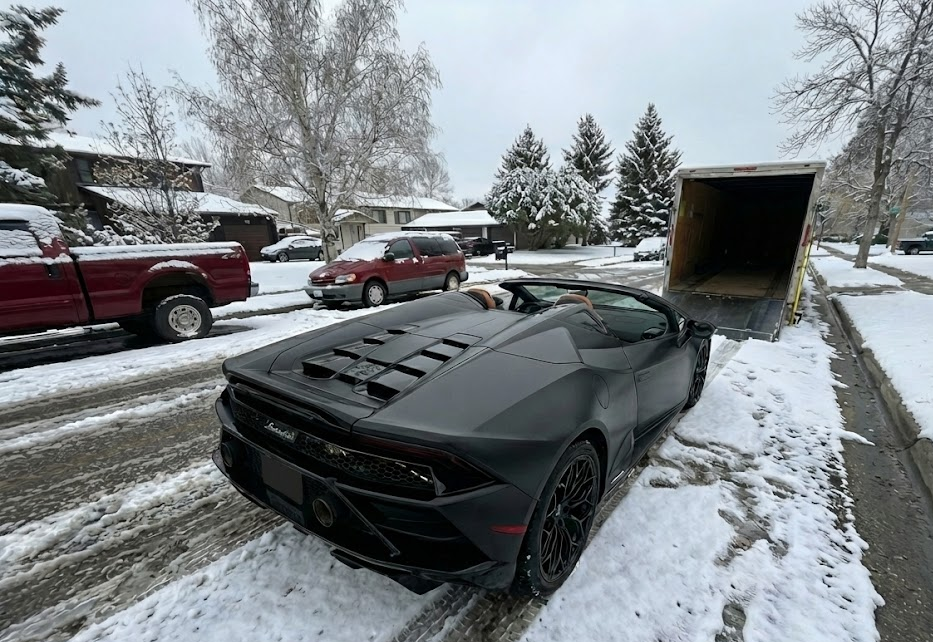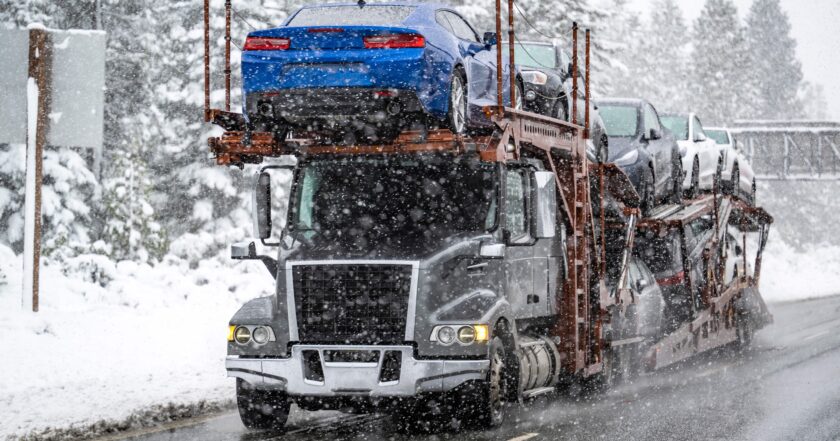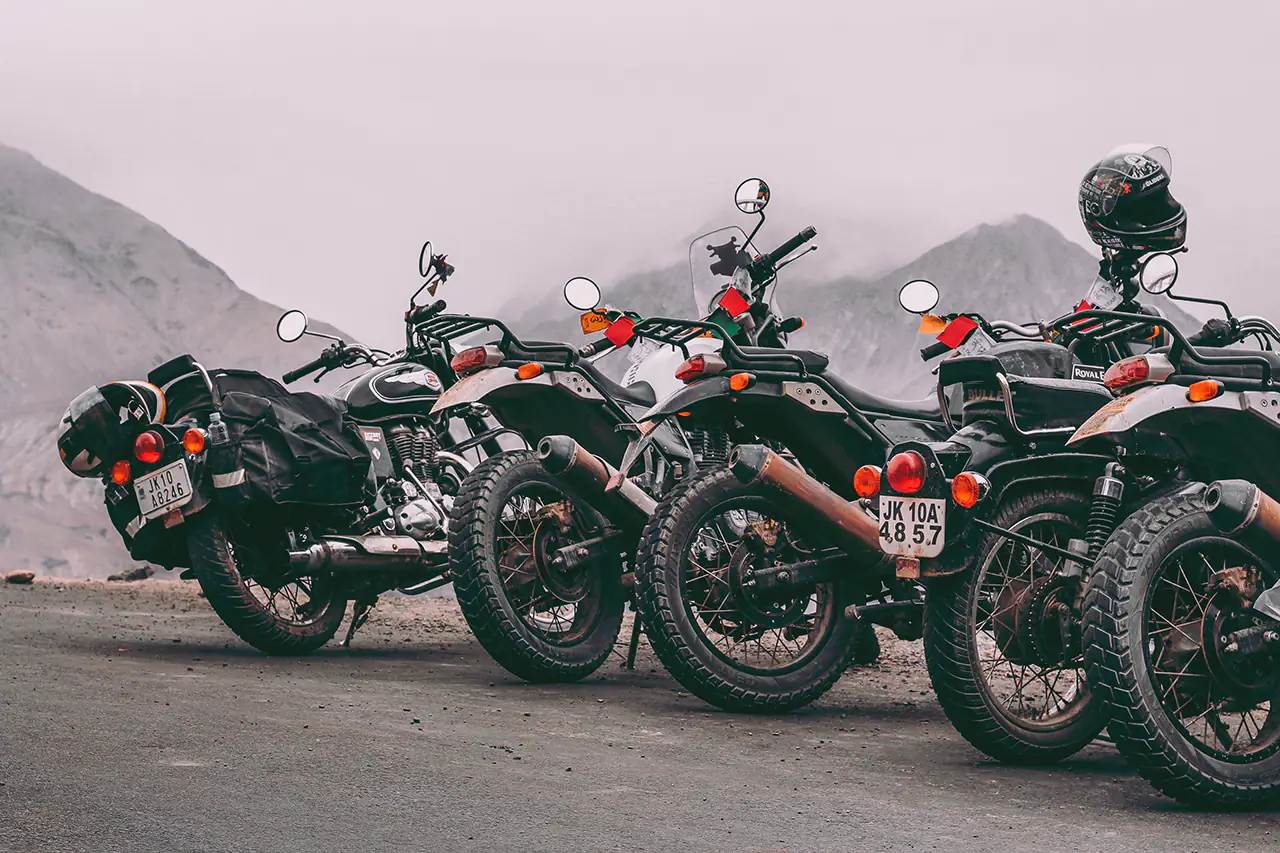Driving a car in the winter can be dangerous, especially when roads get icy. When it’s super cold and snowy, it’s risky for everyone, including truckers moving cars across the country.
We explore the experienced car transport drivers who have many years of winter driving experience under their belts. We took their best advice for staying safe on icy roads and ensuring your car arrives unharmed. If you’re shipping a car this winter, or just want to know how drivers ensure the safety of your vehicle during bad winter weather, these tips should reassure you that your car is being taken care of. This info is good for anyone shipping a car in the winter or driving in icy conditions.
1. Plan Your Route Ahead
Before heading out in winter, smart drivers spend 30-45 minutes checking the weather forecast, DOT websites, and trucker apps. Professional carriers monitor FMCSA SaferWatch for real-time road conditions, state 511 systems for local highway updates, and WeatherOps for detailed storm tracking. They figure out which mountain passes could be a problem and find other routes just in case. They stick to the main highways that are cleared of snow quickly and stay away from back roads where it’s hard to get help.
Your company might pick a route through Arizona instead of going through Colorado’s mountain passes, even if it’s shorter. Coast-to-coast shipments that normally take 7-10 days can extend to 10-14 days in winter because of route changes, reduced speeds, and weather delays. This extra planning keeps your truck safe.
| # | Route to Avoid (Winter) | Safer Alternatives |
|---|---|---|
| 1 | I-80 – Wyoming (Elk Mountain / Cheyenne–Rawlins) |
|
| 2 | I-70 – Colorado (Eisenhower Tunnel / Vail Pass) |
|
| 3 | I-80 – Donner Pass (California) |
|
| 4 | I-84 – Cabbage Hill / Columbia River Gorge (Oregon) |
|
| 5 | I-90 – Lookout Pass & Fourth of July Pass (ID/MT) |
|
| 6 | I-5 – Siskiyou Summit (OR/CA border) |
|
| 7 | I-40 – Pigeon River Gorge (TN/NC) |
|
| 8 | I-64 / I-77 – Sandstone Mountain (West Virginia) |
|
| 9 | I-68 – Western Maryland grades |
|
2. Slow Down and Keep Safe Distances
Icy roads? Stopping is way harder, like, three times harder. Utah DOT says if you’re going 65 mph on ice, you’ll need over 525 feet to stop – that’s longer than three football fields! Smart drivers slow way down, like cutting their speed almost in half (from 65 to 30-35 mph), and they leave a lot more space between them and the car ahead, like 8-10 seconds instead of 4-6. They also keep an eye out for ice and adjust for how heavy their load is.

If your carrier’s going super slow (like 25 mph) or even parked for a bit, it’s because they’re trying to keep your car safe. A driver who speeds up to stick to the plan risks a jackknife with your car. So, winter delays from driving slower? That’s them being careful and pro, not messing up.
3. Check Your Tires and Chains
Before it gets cold, good carrier companies check tires for enough tread (at least 4/32, ideally 6/32+), cracks, and the right air pressure for winter. They buy winter or all-season tires that work well in the cold. Plus, they have tire chains for all the drive axles and put them on as soon as they see ice, not just when the law says so.
State chain requirements vary significantly across the country. California enforces R2 and R3 chain requirements during severe conditions. Colorado implements both the Passenger Vehicle Traction Law and stricter Commercial Vehicle Chain Law on mountain passes. Wyoming mandates chains on specific Interstate 80 sections during winter storms. Oregon requires chains or traction tires on designated routes from November through April. Professional carriers know these regulations for every state along their route. Cheap shippers with bad tires or who don’t use chains are taking chances with your vehicle. Good companies plan for new tires and keep chains in good shape; that’s why shipping in winter costs 10-20% more. If you’re shipping something valuable, ask about their tire and chain policies beforehand.
4. Use Engine Braking Carefully
Using engine braking, which means shifting to lower gears, helps slow your car down by using the engine instead of the brakes. This can stop your wheels from locking up and causing you to skid on ice. Good drivers usually downshift before turns or when going downhill. They also tap the brakes gently and don’t use cruise control when it’s icy. Good braking keeps your car steady on the trailer, stopping damage from quick movements. The straps that hold your car down are made for normal driving, not wild jerks from a truck that’s skidding. Drivers who are good at engine braking can drive down steep mountains without putting your car at risk.
5. Keep Emergency Supplies Handy
Truck drivers keep their vehicles stocked with must-haves for survival, like blankets, food, water, and a first-aid kit. They also carry gear for vehicle emergencies, such as a snow shovel, sandbags, tow straps, flares, and extra windshield washer fluid. To keep in touch, they bring a CB radio or a satellite. They also carry additional fuel because idling to stay warm when it’s snowing out really eats up the fuel. Good drivers just chill and wait out the storm instead of freaking out and doing something risky. Being ready for anything proves you’re a pro, and it impacts your insurance. Winter is the time you really need to confirm your carrier’s coverage. Federal regulations require auto transport carriers to maintain minimum liability insurance of $750,000 to $1,000,000, depending on cargo type. Be sure to get a Certificate of Insurance showing cargo coverage (at least $100,000 per vehicle) and winter weather details before you pick anything up.
6. Avoid Sudden Maneuvers
Truckers who are good at their jobs don’t jerk the wheel, brake hard, or floor it, especially when it’s icy. It’s all about being smooth. They slow down for turns by using the engine to brake, signal way ahead when changing lanes, and ease into the gas pedal to avoid spinning out. They also stay alert and keep a safe distance around their rig. If you brake hard or swerve fast, you risk damaging your car’s bumpers, suspension, or panels because of the straps. Driving smoothly is easier on your car, the straps, and the trailer. If you’re shipping a fancy car like a classic or luxury model, the carrier will check the straps every time they stop. Metal shrinks when it’s cold, so the straps might loosen up.
7. Know When to Stop
The biggest winter driving skill? Knowing when to just stay put. Truckers do it all the time when things get nasty, like during whiteout blizzards, when roads are icy, or when there are huge grow. They find a rest area or truck stop and chill out, even if it takes a long time. They quickly let people know they’re stopping, why, and when they think they’ll hit the road again.
If your shipment is late in winter, it doesn’t mean someone messed up. It means they’re being safe. If someone calls to say they’re waiting out the weather for a day, they’re keeping your vehicle—and themselves—safe. Good carriers plan for delays in winter contracts and are upfront about what to expect. Would you rather your car show up a day late in good shape, or on time but wrecked?
8. Go with Enclosed Trailers for the Best Winter Defense
Open trailers leave cars open to road salt, ice, and freezing temps, but enclosed trailers give way better winter protection. Pros use enclosed transport to keep your car safe from bad weather. This stops salt from rusting the undercarriage, ice from building up on windows and locks, and freezing from hurting seals and trim. The enclosed space keeps temps steadier, which protects the paint and inside parts. Sure, enclosed shipping costs 40-60% more than open transport, but it’s a must for fancy, classic, or expensive cars in winter. A lot of carriers even heat enclosed trailers when it’s super cold to keep fluids from freezing and batteries from dying.

Summary:
Winter delays are about safety, not being bad at the job. What normally takes 7-10 days coast-to-coast extends to 10-14 days in winter conditions. Better your car gets there late and in one piece than on time but wrecked. Before booking, verify your carrier maintains proper insurance ($750K-$1M liability minimum), has documented tire and chain policies, and provides clear adverse weather communication protocols.
Enclosed trailers are great because they keep your stuff safe from winter weather like salt, ice, and freezing temps.





